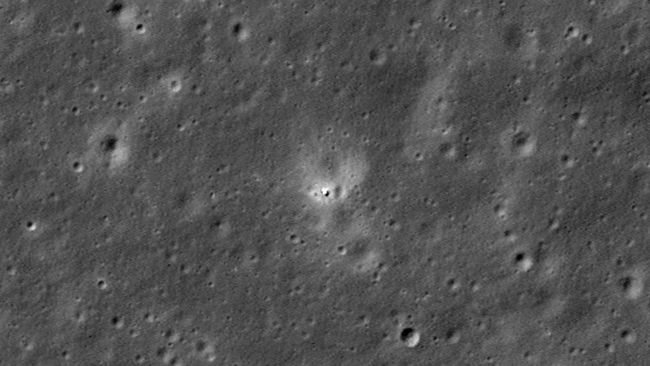The agency photographed the landing site of the Chinese Chang'e-6 probe
NASA captured Chinese lunar orbiter «Chang'e-6» on the far side of the Moon. The images were taken by NASA's Lunar Reconnaissance Orbiter (NASA LRO).
Lander «Chang'e-6» is located between two craters similar in size and sits on the edge of a thinner crater about 50 meters wide, said Mark Robinson, principal investigator for the camera system aboard LRO.
LRO discovered «Chang'e-6» in the Apollo basin on the far side of the Moon on June 7, 2024. The lander is visible as a small cluster of bright pixels in the center of the image.
The Lunar Reconnaissance Orbiter Camera (LROC) team calculated the coordinates of the landing site as minus 41.6385 degrees north latitude and 206.0148 degrees east longitude, at an altitude of minus 5,256 meters relative to the average lunar surface, with an estimated accuracy of about 30 meters.
«The increased brightness of the area around the lander is caused by interference from the lander's engine and is similar to the blast zone observed around other lunar landers», — the LROC team wrote in the image description.
The LROC team members also released an image of the same area taken on March 3, 2022, to show what it looked like before the Chang'e-6 landing and to highlight the spacecraft's presence on the lunar surface.
Landing site «Chang'e-6» located on the «sea» area of cooled volcanic rock — on the southern edge of the Apollo Basin. Robinson and colleagues note that basaltic lava erupted south of Chaffee S crater approximately 3.1 billion years ago and flowed east downslope until it encountered a local topographic high, likely associated with a fault.
«Several ridges in this region have deformed and raised the surface. The landing site is approximately halfway between two of these ridges. The lava flow also overlaps a slightly older flow (~3.3 billion years old) visible further east, but the younger flow is different in that it contains more iron oxide and titanium oxide», — says in the image description LROC.
«Chang'e-6» was launched from Hainan Province in southern China on May 3 with the goal of bringing lunar samples from the far side of the Moon to Earth for the first time in history. Having completed the collection of lunar samples, the probe segment rose from the lunar surface with its precious cargo on June 3.
After reuniting with the orbiter of the «Chang'e-6» and the completion of the transfer of lunar samples, the returning segment continues to orbit the Moon, waiting to begin its return journey to Earth.
The return capsule is expected to land around June 25 with lunar samples. The capsule will land at a pre-selected area in Xiziwan Banner in northern China's Inner Mongolia Autonomous Region, completing its 53-day space mission.

